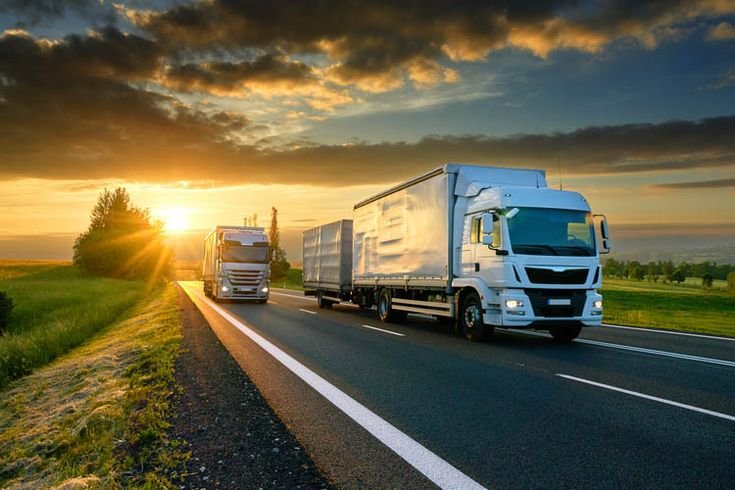Introduction
Truckload shipping is the lifeblood of supply chains, moving billions of tons of freight annually across highways. Whether you’re a manufacturer, retailer, or logistics manager, understanding how truckload shipping works can save you time, money, and headaches.
This guide covers everything you need to know about truck loads, including:
Full Truckload (FTL) vs. Partial Loads (LTL)
How pricing is calculated
Where to find loads (freight boards, brokers, direct carriers)
Top challenges and how to overcome them
2025 industry trends (AI, electric trucks, autonomous freight)
What Are Truck Loads?
A truck load refers to the amount of freight transported by a single truck. The two main types are:
1. Full Truckload (FTL)
- Definition: A shipment that fills an entire trailer (24–26 pallets or 20,000–45,000 lbs).
- Best for: Large-volume shippers, time-sensitive freight.
- Pros:
- Faster transit (no stops)
- Less handling → lower damage risk
- More predictable pricing
2. Less Than Truckload (LTL)
- Definition: Smaller shipments that share trailer space (1–6 pallets).
- Best for: Small businesses, cost-conscious shippers.
- Pros:
- Pay only for space used
- Eco-friendly (reduces empty miles)
- Cons:
- Longer transit times (multiple stops)
- Higher risk of damage (more handling)
How Truck Load Pricing Works
Key Factors Affecting Cost
| Factor | Impact on Price |
|---|---|
| Distance | Longer hauls = higher cost per mile |
| Weight/Dimensions | Heavy or oversized = +20–50% |
| Freight Class | Ranges from Class 50 (cheap) to Class 500 (expensive) |
| Seasonal Demand | Holiday spikes (+15–30%) |
| Fuel Surcharges | Tied to diesel prices |
2025 Average Rates
| Route | FTL Cost | LTL Cost (per pallet) |
|---|---|---|
| Los Angeles → Dallas | $2,800–$4,200 | $150–$300 |
| Chicago → New York | $2,000–$3,500 | $120–$250 |
Pro Tip: Use freight brokers (like CH Robinson) or load boards (DAT, Truckstop) to compare rates.
Where to Find Truck Loads
1. Freight Brokers
- Pros: Access to vetted carriers, negotiated rates.
- Cons: Broker fees (15–30% markup).
- Top Brokers: CH Robinson, Uber Freight, Echo Global.
2. Load Boards (For Carriers & Shippers)
- DAT (Largest load board)
- Truckstop.com (Best for flatbed/oversized)
- 123Loadboard (Budget-friendly option)
3. Direct Contracts with Carriers
- Best for high-volume shippers (Walmart, Amazon).
Top Challenges in Truckload Shipping
1. Capacity Shortages
- 2025 driver shortage: 80,000+ unfilled trucking jobs (ATA).
- Solution: Book loads 2–3 weeks early during peak seasons.
2. Rising Fuel Costs
- Diesel prices impact fuel surcharges (up to 30% of total cost).
3. Theft & Cargo Damage
- $15B+ lost annually to cargo theft (FBI).
- Prevention: Use GPS tracking, sealed trailers.
4. Detention & Delays
- Avg. detention cost: $50–$150/hr.
- Fix: Choose carriers with on-time delivery guarantees.
2025 Truckload Industry Trends
1. Electric & Hydrogen Trucks
- Tesla Semi, Nikola, Volvo leading zero-emission freight.
2. AI & Predictive Logistics
- Dynamic pricing algorithms (like Convoy’s).
- AI route optimization reduces empty miles.
3. Autonomous Trucking Pilots
- Waymo, TuSimple testing self-driving freight.
4. Blockchain for Transparency
- Smart contracts automate freight payments.
How to Book Truck Loads (Step-by-Step)
- Choose FTL or LTL (Based on shipment size).
- Get Quotes (Brokers, load boards, or direct carriers).
- Verify Carrier Credentials (FMCSA DOT#, insurance).
- Track Shipment (GPS, ELD updates).
- Pay & Review Performance (Rate carriers for future bookings).
Conclusion
Truckload shipping is evolving with AI, automation, and green energy, but the fundamentals remain:
✔ FTL = faster, LTL = cheaper
✔ Book early to lock in rates
✔ Use tech (GPS, load boards) to optimize costs
Need help finding reliable carriers?

Leave a Reply